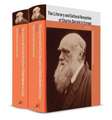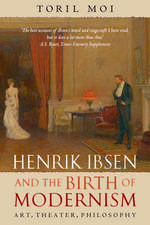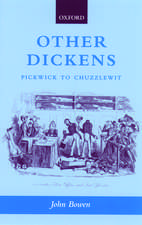The Reception of George Eliot in Europe: The Reception of British and Irish Authors in Europe
Editat de Dr. Elinor Shaffer, Dr Catherine Brownen Limba Engleză Hardback – 10 feb 2016
Din seria The Reception of British and Irish Authors in Europe
- 44%
 Preț: 2166.85 lei
Preț: 2166.85 lei - 36%
 Preț: 192.42 lei
Preț: 192.42 lei -
 Preț: 189.28 lei
Preț: 189.28 lei -
 Preț: 192.15 lei
Preț: 192.15 lei -
 Preț: 188.34 lei
Preț: 188.34 lei - 34%
 Preț: 229.75 lei
Preț: 229.75 lei -
 Preț: 193.96 lei
Preț: 193.96 lei -
 Preț: 398.19 lei
Preț: 398.19 lei -
 Preț: 192.99 lei
Preț: 192.99 lei -
 Preț: 190.44 lei
Preț: 190.44 lei - 34%
 Preț: 230.90 lei
Preț: 230.90 lei -
 Preț: 586.90 lei
Preț: 586.90 lei -
 Preț: 190.81 lei
Preț: 190.81 lei - 36%
 Preț: 192.15 lei
Preț: 192.15 lei - 36%
 Preț: 192.42 lei
Preț: 192.42 lei - 44%
 Preț: 1667.84 lei
Preț: 1667.84 lei - 44%
 Preț: 1317.79 lei
Preț: 1317.79 lei - 44%
 Preț: 1433.99 lei
Preț: 1433.99 lei - 35%
 Preț: 193.18 lei
Preț: 193.18 lei -
 Preț: 192.15 lei
Preț: 192.15 lei -
 Preț: 229.37 lei
Preț: 229.37 lei - 17%
 Preț: 329.44 lei
Preț: 329.44 lei -
 Preț: 1893.83 lei
Preț: 1893.83 lei -
 Preț: 1667.84 lei
Preț: 1667.84 lei - 14%
 Preț: 1471.24 lei
Preț: 1471.24 lei - 36%
 Preț: 1783.83 lei
Preț: 1783.83 lei
Preț: 1317.79 lei
Preț vechi: 2346.08 lei
-44% Nou
Puncte Express: 1977
Preț estimativ în valută:
252.15€ • 264.02$ • 209.15£
252.15€ • 264.02$ • 209.15£
Carte tipărită la comandă
Livrare economică 10-24 aprilie
Preluare comenzi: 021 569.72.76
Specificații
ISBN-13: 9781441190222
ISBN-10: 1441190228
Pagini: 512
Dimensiuni: 156 x 234 x 29 mm
Greutate: 0.89 kg
Editura: Bloomsbury Publishing
Colecția Bloomsbury Academic
Seria The Reception of British and Irish Authors in Europe
Locul publicării:London, United Kingdom
ISBN-10: 1441190228
Pagini: 512
Dimensiuni: 156 x 234 x 29 mm
Greutate: 0.89 kg
Editura: Bloomsbury Publishing
Colecția Bloomsbury Academic
Seria The Reception of British and Irish Authors in Europe
Locul publicării:London, United Kingdom
Caracteristici
The first complete survey of Eliot's reception throughout Europe by an international team of scholars.
Notă biografică
Elinor Shaffer is a Fellow of the British Academy, (Hon.) Professor, University College London, UK, and Senior Research Fellow, Institute of Modern Languages Research, School of Advanced Study, University of London. She is the Director of Research and Series Editor of the Reception of British and Irish Authors in Europe, of which The Reception of George Eliot in Europe is the twenty-first volume. She is also author of 'Kubla Khan' and The Fall of Jerusalem: the Mythological School in Biblical Criticism and Secular Literature (1980), which begins with Coleridge and concludes with a study of Daniel Deronda; author of the Introduction to the Everyman Middlemarch; and "The Sound of Grass Growing": Eliot in Weimar', a lecture to the Goethe Society. She is a founder-member of the British Comparative Literature Association and founder-editor of Comparative Criticism. Catherine Brown is Head of the English Faculty and Senior Lecturer in English at the New College of the Humanities, London, UK. She is the author of The Art of Comparison: How Novels and Critics Compare (2011), which considers the nature of comparison per se using the case studies of George Eliot's Daniel Deronda, Lev Tolstoy's Anna Karenina, and D.H. Lawrence's
Cuprins
Series Editor's PrefaceElinor Shaffer AcknowledgementsList of ContributorsAbbreviationsTimeline Catherine Brown and Elinor Shaffer IntroductionElinor Shaffer and Catherine Brown Northern EuropeGermany1. The Reception of George Eliot in Germany during her LifetimeGerlinde Röder-Bolton 2. George Eliot in East, West and Reunified Germany, 1949-2013 Annika Bautz Netherlands3. George Eliot in the Netherlands Diederik van Werven Scandinavia4. "Spirit of the Age(s)": The Reception of George Eliot in Sweden Git Claesson Pipping and Catherine Sandbach Dahlström 5. George Eliot's Reception in Denmark Ebbe Klitgård 6. George Eliot in Norway: The Enthusiasm that Petered OutMarie Nedregotten Sørbø Southern Europe France7. The Reception of George Eliot in France Alain Jumeau Italy 8. The Reception of George Eliot in Italy: 1868 to the Present Maria-Luisa Bignami 9. The Early Italian Reception of RomolaFranco Marucci 10. Romola in England and Italy. With Timeline of RomolaFrancesca Bugliani Spain11. George Eliot in Spain María Jesús Lorenzo-Modia Catalunia 12. George Eliot in Catalonia: The Long and the Short of ItJacqueline Hurtley and Marta Ortega Sáez Eastern Europe Russia 13. The Reception of George Eliot in Russia: The Start that Determined the Paradigm Boris Proskurnin 14. George Eliot in the Soviet Union and Post-Soviet Russia (1917-2014)Natalya V. Gorbunova Bulgaria15. George Eliot in BulgariaVesela Katsarova Czech Lands16. An Unspeakable Journey: Czech and Slovak Reception of George Eliot Zdenek Beran Poland17. The Reception of George Eliot in Poland Ilona DobosiewiczHungary18. The Hungarian Reception of George EliotMihály Szegedy-Maszák Romania19. George Eliot in RomaniaAdina Ciugureanu Greece20. The Reception of George Eliot in Greece Georgia Farinou-Malamatari BibliographyIndex
Recenzii
Begun in 2002, Bloomsbury's "The Reception of British and Irish Authors in Europe" series offers comprehensive, erudite coverage of geopolitical or translation contexts for individual authors. This volume on how George Eliot was received across hostile, friendly, or historically shifting borders over a tumultuous 150 years addresses numerous questions: Who cared that "he" was a woman? Who didn't? Who published her? Which works? When? In English or translation? How good were the translations? How many copies sold? Read in libraries? How much political, social, or literary favor or hostility appears in the texts-or the margins? The essays vary in length, depth, density, and variety of authorship, method, and style, but readers favoring a particular geography or work will find surprises. Eliot was sensitive to social stratification, so this reviewer found the essays on the shifting geopolitical contexts of Germany and former Soviet bloc countries the liveliest and most layered. Italians of course fixated on Romola-but who knew that Hollywood exploited both romantic Gish sisters, Lillian and Dorothy, to make it into a 1924 blockbuster? The volume includes a vast bibliography. Summing Up: Recommended. Upper-division undergraduates through faculty.
Important sociopolitical connections emerge from the pictures of individual countries, giving the reader a broad view of not only the responses of Eliot's contemporary audience, but the far-reaching ripples of her impact over time. This combination of narrow focus on single countries, the detailed examination of Eliot's works in translation, and the high-level overview that emerges of the nineteenth-century literary landscape will be of most use to more advanced students and scholars who wish to dig deeply into Eliot's legacy and enduring relevance.
An interesting account of the reception of Eliot's work across Europe ... We find much insight on Eliot's creative progress and intellectual background.
Important sociopolitical connections emerge from the pictures of individual countries, giving the reader a broad view of not only the responses of Eliot's contemporary audience, but the far-reaching ripples of her impact over time. This combination of narrow focus on single countries, the detailed examination of Eliot's works in translation, and the high-level overview that emerges of the nineteenth-century literary landscape will be of most use to more advanced students and scholars who wish to dig deeply into Eliot's legacy and enduring relevance.
An interesting account of the reception of Eliot's work across Europe ... We find much insight on Eliot's creative progress and intellectual background.













